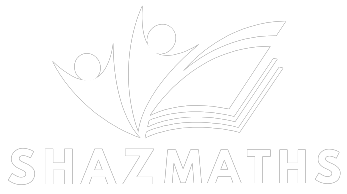If you’re a student or a parent in Australia, you’ve probably heard of the Australian Curriculum for Mathematics. It’s the national framework that guides what students learn in maths from primary school through to senior secondary years. But beyond the formal name, what does this curriculum actually involve? How does it change as students move up the years? And how can you stay on top of it?
In this post, we’ll break it all down—plain and simple—so students and families know what to expect and how to better navigate the path ahead.
What is the purpose of the national maths curriculum?
The Australian Curriculum for Mathematics is designed to help students develop a solid understanding of key mathematical concepts and how they apply in real life. It’s not just about learning formulas or solving textbook problems. The goal is to help students become confident, logical thinkers who can approach problems in structured and creative ways.
The curriculum starts in Foundation (Prep) and continues through Year 10, with general guidelines for what students should know by each stage. In senior secondary school, students can choose different pathways such as General Mathematics, Mathematical Methods, or Specialist Mathematics depending on their interests and future goals.
What are the three key strands of learning?
Mathematics in the Australian curriculum is built around three main strands:
- Number and Algebra – understanding numbers, patterns, and how they relate.
- Measurement and Geometry – working with shapes, space, time, and measurement.
- Statistics and Probability – collecting, analysing and interpreting data, and working with chance.
Across all year levels, these strands are taught in ways that help students connect maths with everyday thinking. Whether it’s calculating the cost of groceries, reading maps, or analysing data in a science experiment, the curriculum aims to keep learning relevant.
How does it progress through the year levels?
In the early years, maths learning focuses heavily on basic number skills and simple problem solving. As students move into middle and upper primary, topics like fractions, multiplication, and basic geometry come into play.
In secondary school, things become more specialised. Students start exploring algebra in more depth, learning to apply formulas, and diving into more advanced geometry, statistics, and probability.
By Year 10, students are preparing to choose a pathway. These choices impact what they’ll learn in Years 11 and 12, especially if they’re planning to sit the VCE (or other state-based qualifications). That’s why a good grasp of earlier content is so important—it forms the base for everything that comes next.
Why understanding the structure matters
Being aware of how the Australian Curriculum for Mathematics is structured helps students and parents plan ahead. It makes it easier to identify if a student might be falling behind in a particular area, or if there’s room to take on more advanced material.
This understanding is also important when transitioning between schools or moving from one state to another. While the curriculum is nationally designed, some details can vary slightly depending on the region.
Conclusion
So whether you’re just starting out in primary school or heading into senior secondary studies, knowing what’s expected in maths, and when, can make a huge difference. The Australian Curriculum for Mathematics is there to guide students step by step, making sure key skills are built over time.
And remember, maths isn’t just about numbers. It’s about thinking clearly, solving problems, and understanding how the world fits together. When you understand the curriculum, you’re already one step ahead.


